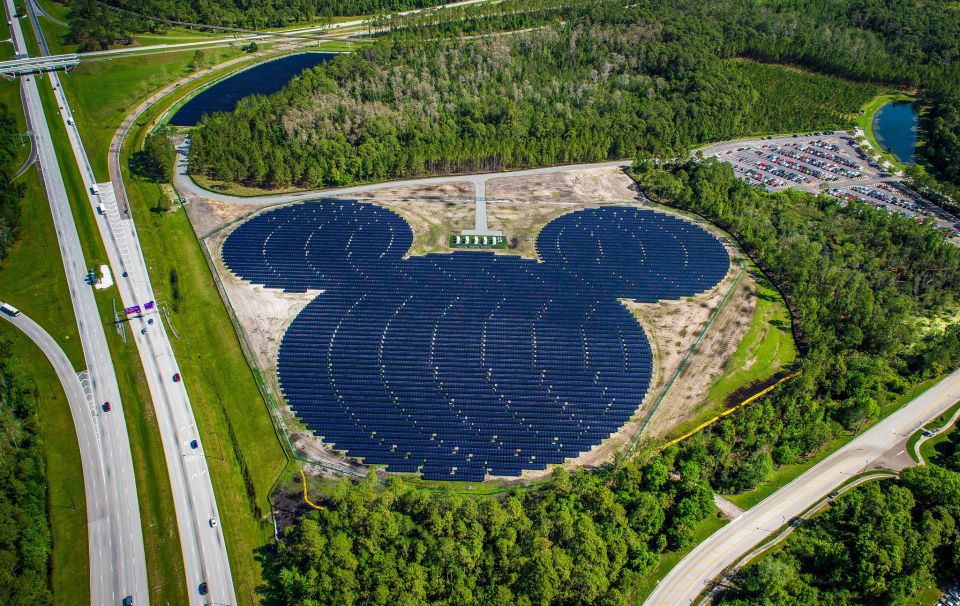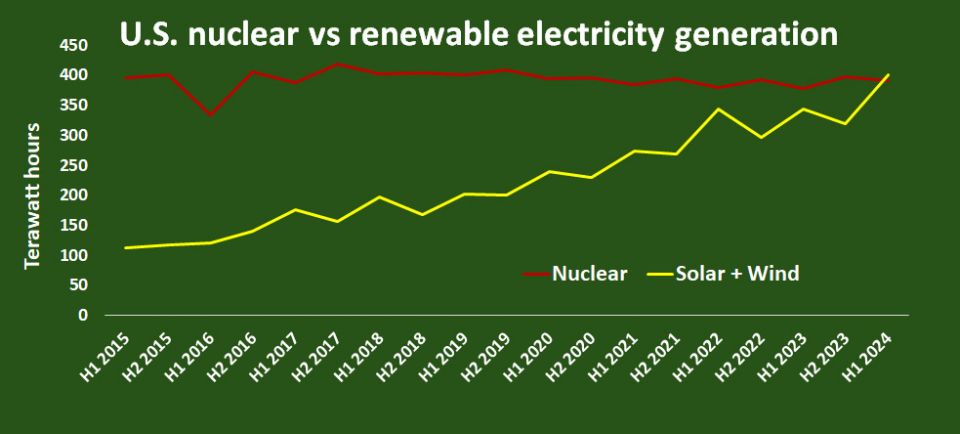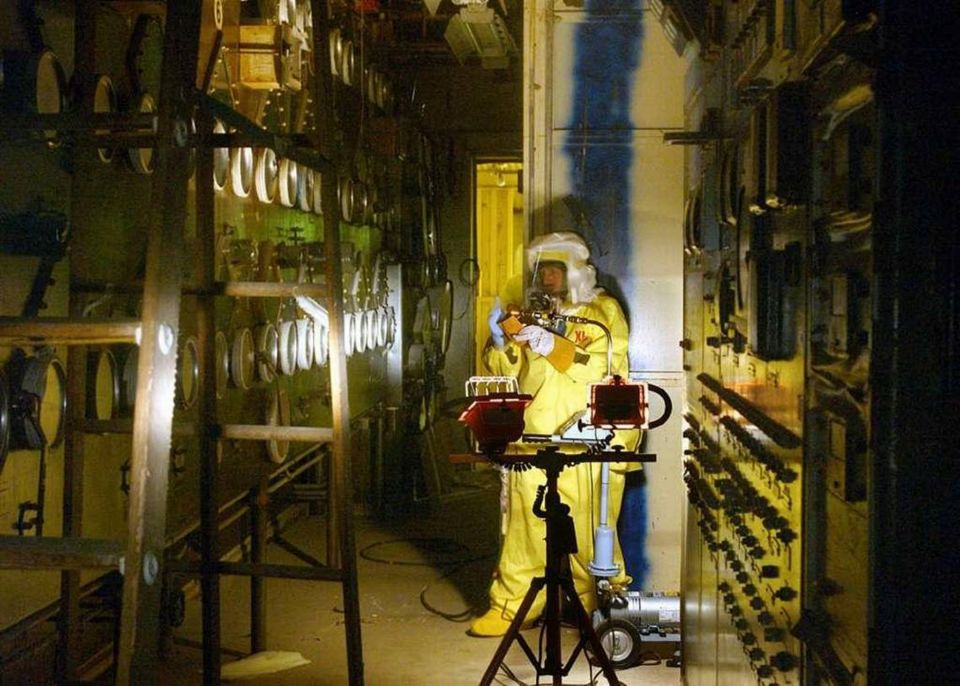Can hydrogen be the transportation fuel in an otherwise nuclear economy?
Let’s face it: The global economy should be powered primarily by nuclear power. And it probably will by the end of this century, with a still-significant assist from renewables and hydro. Once nuclear systems are dominant, the costs come down to where gas is now; and when carbon emissions are reduced to a small portion of their present state, it will become obvious that most other sources are only good in niche settings. I mean, why use small modular reactors to load-follow when they can just produce that power instead of buffering it?
More than 20 countries from four continents at the 28th Conference of the Parties to the U.N. Framework Convention on Climate Change (COP28) determined that the world cannot sufficiently decarbonize without a large increase in nuclear energy. They called for a tripling of nuclear power to stabilize carbon emissions worldwide and accelerate our transition away from fossil fuels.
But that still leaves transportation in a pickle. Electric vehicles (EVs) are great, but no one thinks they will be built in numbers anywhere near 5 billion—the number needed to replace cars that run on internal combustion engines and supply the growing global middle class with the rides they need. At most, we can conceive of about 1 billion EVs by 2050, and that’s pushing it. There were only 2.2 million EVs on America’s roads in 2022. The Energy Information Administration projects only about 29 percent of new light-duty vehicle sales in 2050 will be electric.
Hydrogen grid: Enter the hydrogen grid.
Hydrogen, either as liquid or compressed gas, appears to be the only fuel that can replace petroleum, particularly if it can be produced relatively greenly and at a reasonable cost. Automotive companies are ready to put hydrogen fuel cell vehicles into mass production, but hydrogen is currently too expensive, even with the anticipated $3-per-kilogram clean hydrogen production tax credit. It is estimated that the global hydrogen market will be about 800 million metric tons per year by 2050. The share of this market for distributed hydrogen will probably be upward of 50 percent.
So, cleanly creating and cheaply distributing hydrogen is a challenge.
But what if you could create it without using natural gas and instead use net-zero biogas? And what if you could use existing gas pipelines to distribute that feedstock? What if you could shrink the hydrogen manufacturing plant from the size of a high school to the size of a refrigerator? And what if you could 3D print the key components to make it cheap? What if you could place these small manufacturing plants at each filling station so that hydrogen doesn’t have to be distributed at all? And what if the electricity needed for production came from nuclear power?

STARS’s H2 generator in assembly. (Photo: STARS Technology)

STARS’s compact steam reformer. (Photo: STARS Technology)
Pioneers: There are many companies pioneering hydrogen production, such as Bayotech, Linde, Plug Power, and Nel Hydrogen—and they’re all great, but one company, STARS Technology, has turned these “what ifs” into “yeah, got thats” as a result of incorporating microchannel reactors and heat exchangers into their STARS Hydrogen Generator. Funded by the Department of Energy and NASA through technology projects at Pacific Northwest National Laboratory, STARS Technology has combined several previously separate technologies into one efficient system that can be thought of as chemical process chips.
These systems are small; the chemical process portion of their first commercial-scale unit has a one-square-meter footprint, is a little over two meters tall, and can be installed right at a filling station. Other innovations, such as 3D printing of key components and assembly line construction in factories, will keep the manufacturing cost down.
Most of the world’s hydrogen is presently formed by steam reforming of natural gas, at a production cost of about $1–$2 per kilogram. It is then distributed in compressed tanker trucks, which adds several additional dollars per kilogram to the price. With amortization of the capital and operating costs at the filling stations, plus profit, the price at filling stations is currently very high—about $20 per kilogram.
Placing a STARS system at each filling station would avoid distribution costs or the special issues of pipeline transportation.
Even better, STARS uses biogas plus electricity to make this process basically carbon neutral, if not negative, depending on the source of the biogas, whether landfills or chicken and cattle ranches or wastewater treatment plants and so forth. If the electricity comes from nuclear, then it is truly green. This type of system also creates a distributed market for waste biogas that might otherwise be released to the atmosphere.
Distributed production: Speaking of electricity, the electricity in these units is used to drive the endothermic reforming reactor as opposed to the more conventional approach of burning a fossil fuel, so they also use electricity from the electrical grid. However, since about 75 percent of the energy in the hydrogen product comes from biogas and only about 25 percent from electricity, the energy in the hydrogen product is nearly twice the energy in the electricity consumed, and this means that hydrogen produces about four times more hydrogen per unit of electricity than do conventional electrolyzers. Distributed hydrogen production for transportation also enables distributed, load-following electricity production from a portion of the hydrogen. This is a big connection for nuclear power as well as for offsetting the intermittencies of wind and solar.
The STARS Hydrogen Generator is a small, inductively heated steam reformer (think of an induction cooktop in the kitchen). Microchannels are crucial because the heat exchange rates go as the square of the channel aperture. As a result, the process intensity within microchannels is about 100 times normal. And these reformers and associated heat exchangers can be 3D printed.
As STARS’s president and chief technology officer Robert Wegeng puts it, “Calling these chemical process chips gives a similar feel to how computer chips revolutionized the computing industry. In this case, assembly line mass production beats economy of size scale.”
How ever you provide the heat from essentially clean net-zero carbon, through nuclear-supplied electricity or biogas, the product is clean.
Mass production: Microchannel process technology was originally developed at PNNL. The inductively heated biogas reformer (BGR) and High-Temperature Recuperative Heat Exchanger (HTR) were developed and demonstrated by PNNL and STARS, with support from the DOE’s RAPID Manufacturing Institute for Process Intensification and Southern California Gas Company, which cost-shared the projects.
The STARS Hydrogen Generator uses microchannel process technology and additive manufacturing (3D printing) to mass produce modular chemical reaction systems that convert water and biomethane into hydrogen in a process called steam reforming. It is now possible to transform the natural gas grid into the hydrogen grid without costly pipelines or delivery vehicles. It is no longer necessary to invest only in large central hydrogen production plants or create new infrastructure for collecting and transporting waste to make hydrogen. Distributed systems using biogas will enable gas distribution companies and end users to make clean hydrogen on-site.
STARS’s microchannel reactors and heat exchangers are typically about one one-hundredth the size of conventional reactors and heat exchangers. Smaller size and 3D printing minimize production waste and material costs, which lowers capital costs. Miniaturization also provides greater operational safety, because there is less biomethane and hydrogen in the high-temperature section of the process hardware. Yet the speed of the chemical reaction is more than 100 times faster so that it produces as much hydrogen in the same time frame as large conventional chemical reactors.
The compact design reduces the footprint, allowing on-site installation at most locations. On-site levelized costs of hydrogen production are projected to be less than $2.50 per kilogram, with moderate quantities of hardware mass production (approximately 1,000 units per year). And with that, the $3-per-kilogram clean hydrogen production tax credit really accelerates adoption and building of the necessary infrastructure.
World record: Note that STARS’s biogas reformer holds a world record electrical energy to chemical conversion efficiency for inductively heated reformers—slightly greater than 80 percent.

H2 stations could connect the hydrogen hub system to form a type of microgrid strategy for hydrogen. (Image: STARS Technology)
Note too that one kilogram of hydrogen is equal to one gallon of gasoline-equivalent (gge) in energy content.
So, thinking of the global market, a STARS’s Hydrogen Generator—with a production capacity of 250 kilograms per day and an 85 percent capacity factor over 365 days—will produce about 77,500 metric tons per year at a levelized production cost below $2.50 per kilogram, with a chemical process footprint of a few square meters.
This kind of system fits in really well with the U.S. Department of Energy’s Regional Clean Hydrogen Hubs Program (H2Hubs), which looks to establish regional clean hydrogen hubs across America that will contribute substantially to decarbonizing multiple sectors of the economy, especially heavy industries like steel and cement production. Because these small systems can be sited at filling stations, they will connect the hub system through distributed lines—really, part of a microgrid strategy that will enable the opening of transportation corridors, as envisioned in the map shown here.
James Conca is a scientist in the field of earth and environmental sciences specializing in geologic disposal of nuclear waste, energy-related research, planetary surface processes, radiobiology and shielding for space colonies, and subsurface transport and environmental cleanup of heavy metals.









